The Martial Arts in Pung
While many nations in the world of Talamh are certainly familiar with unarmed fighting, the people of Pung have mastered it to an actual art. The main power in these arts is how the martial artists use their inner "Ki", a spiritual force, to extend into their material bodies in order to protect or attack. These are the many forms you will find in Pung.
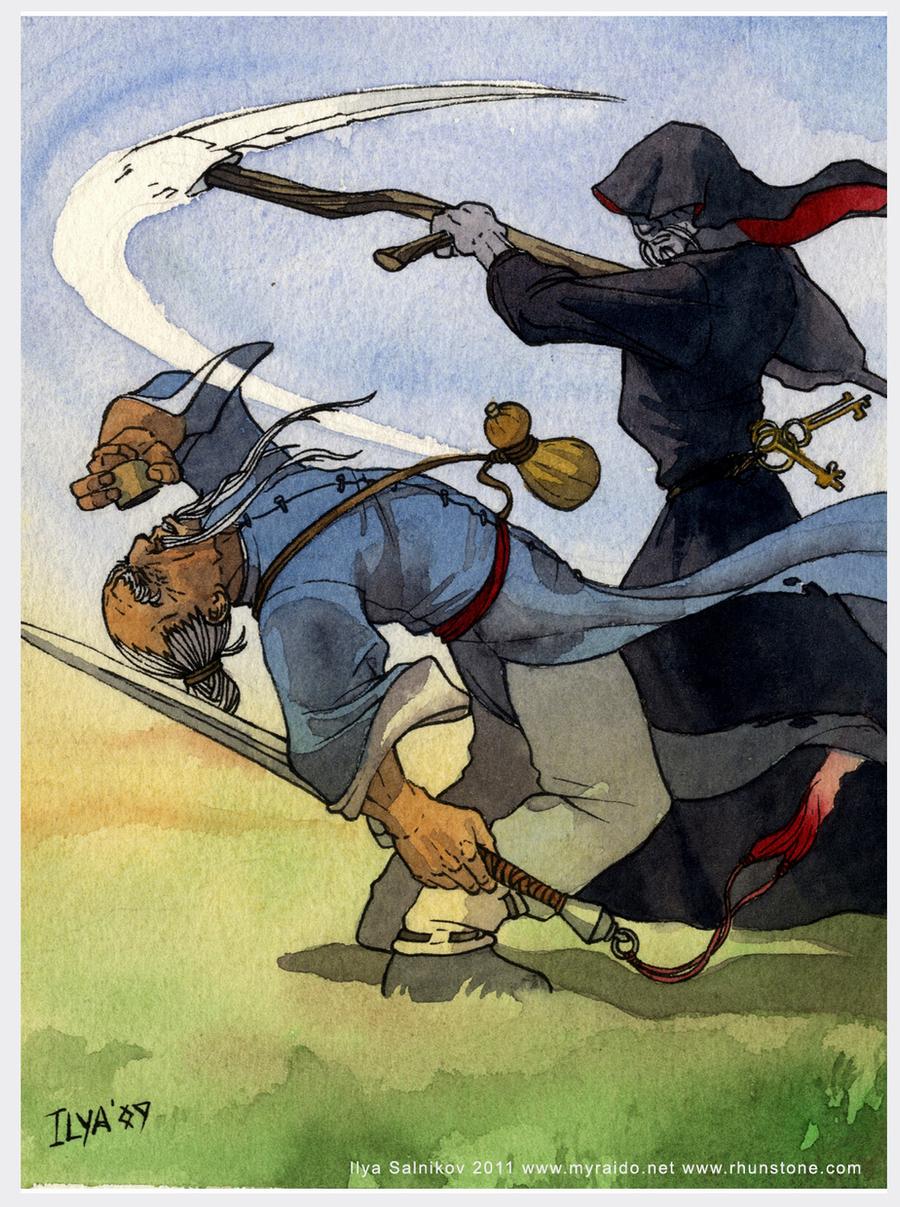
Traditional Forms - "Wushu"
"Long-Quan" - The Open Hand Technique
The Monastery of the Long-Quan order is one of the oldest temples devoted to the art of Kung-Fu. Their headquarters is found in the countryside of Jyn, hidden between two canyon walls. They are known for their meditative states, believing in the use of Ki only to defend, not attack. They are also the ones who actively teach about the use of Ki to better one’s self in life, value ideas of selflessness, and abandon most of what is material besides what is needed to survive. In some sense, they are seen as the purest in monk training, focusing solely on balancing the external force of Ki (the material body, like organs and muscles) to correlate with the internal force of Ki (the soul) so that they work together in harmony, unlike other orders that bend toward more complex and altering forms of Ki. During the initial training of an apprentice monk, they often are sent out to solve local problems in the city as tests for their strength. Hence, you will often find Long-Quan Monks travelling to adventure, though often acting as selfless heroes instead of treasure-plundering “thieves”."Zui-Quan" - The Drunken Master Technique

Drunken Master by Raiddo
A Jui-Gui monk fighting against a deadly Shi Ninja in an open field. He demonstrates the fighting style by pretending to drink, fooling his foe into making a maneuver that is easy to dodge.
Monks who practice this art form are known by the derogatory name "Jui-Gui", which means "Drunken Fool" in the Pungian Common tongue. Considered a “mockery” of Kung-Fu within the lands of Pung, those who practice the art of Zui Quan are found to mostly be wanderers. Instead of deciding to live in a monastery, they believe it is foolish to disconnect yourself from the world and instead embrace what weakens you. Such as concepts like drunkenness. In this, they find Ki particularly empowering to bring great deception in making the opponent believe you are a fool: to tip and sway like a drunkard, only to make a flurry of powerful blows in mere seconds, catching the opponents off guard.
It is rare to find a master who teaches such a martial art, considering they tend to be secretive as to not having foes know what is coming. This is also to encourage those learning this art to come from truly humble origins, not those of the grand monasteries or clans. In this, the Drunken Master stands alone, and has learned to master fighting multiple enemies on their own.
"Kensei" - The Sword Technique
While the Kingdom of Oga struggles with the battling of Ninja clans, a more “finer” martial art came about in the nation’s development as well. After the Revolution of Faraway, those that practiced Long-Quan grew interested in the superior weapons of their neighbors and began to incorporate them into their fighting styles. They incorporated the beauty of art (peace) with the art of the sword (war) to balance as pristine warriors and channel their ki. Many of them went on to becoming Samurai within the territories of Pung. Eventually, there was a split in ideals between the Long-Quan and the Kensei. While the Long-Quan believed in selflessness, those who followed the Kensei were viewed as “selfish” as they valued honor above anything else, instead of focusing on the humbling lifestyle. Despite this, Kensei is practiced amongst many warriors and samurais within the lands of Pung. It’s emphasis on calligraphy and art makes it extremely popular among the wealthy, as well as the relative inexpensiveness of favoring this artstyle against traditional use of armor and shields.Unorthodox Forms
"Taiyo" - Way of the Sun Soul
In the relative peace of the Shikaizu comes the beacons of light that guide them. The Taiyo is a revered form of Kung-Fu, focusing on channeling solar energy through the soul and body. Like the Long-Quan, they believe in balance of body and soul, but they believe in a third aspect: the balance of the sun, which gives life to all things within the world. Without the sun, the body and soul would not co-exist. Though they learn much of the same techniques of Kung-Fu as the Long-Quan, they determined that to emulate the sun’s position against the Earth they, too, must take a distance from what is material. They have mastered using their Ki to project sun-like bolts toward their enemies. This also makes them naturally energetic. For this reason, some monks in this order are either very extroverted, or they have a very short temper. Some in their anger get quite powerful that they can channel more ki into their blasts and cause even more damage. The Monastery of the Taiyo can be found within the mountains of Shikaizu, as the monks here wanted to reach the sun as close as possible."Jeong-Sin" - Way of the Astral Self
The Spirit Santuary found in Ukasan is home to an extremist ideal of “Jeong-Sin”, leaning more toward the existence of Ki instead of the material body. In this, they focus more on their own spirit (ki) as a weapon than balancing them. The Long-Quan view them as the polar opposite of the Kensei in focusing too much on spirit instead of balancing both, and feel it gives the Jeong-Sin great weakness. The Jeong-Sin believe in reincarnation, believing that their current lives are a struggle to eventually ascend above. In fighting with their spirit, they call upon the struggle of their past selves to assist them in the current. These spirits form spectral arms, helmets, etc. to assist them in their journey. Those who practice Jeong-Sin often wear blue or orange robes, shave their heads, and practice periods of fasting when they meditate. It is usually really easy to spot a Jeong-Sin Monk for their silhouette."Met-Jihi" - Way of Mercy
The Met-Jihi are the monks that balance the concepts of life and death. They are bringers and takers of life. They follow the concept of the "Vana", a force of fate that drives all living things. Vana is similar to the Jeong-Sin idea of reincarnation, though it is also connected to the balancing of life and death within the universe. Many speculate the Met-Jihi were the first of men to make contact with the mysterious force of Vanu-Am, the Lady of Fate. (Hence the term Vana.) Though many were originally from the lands of Tamay at the Coast of Dragoncrest, after the mass persecution of King Asthenios they fled north to find new life in the lands of Pung. They are selected, therefore, as doctors often to help the needy when they cannot often afford treatment or are desperate. And they will defend the sick from those who seek to wound them. They are found at the Met-Jihi Monastary in the mountains of Tsino. Those who practice Met-Jihi wear masks to hide their identity and loose robes. It gives them an aura of either heavenly salvation or the aura of death awaiting their enemies.The Four Element Forms
Breath of the Dragon - "Huo-Long"
The Huo-Long, like other elemental styles, abandoned the ways of the Long-Quan in favor of channeling Ki to reach into the elements as a weapon. The Huo-Long believe their fighting style is based on the fiery breath of a dragon. In reality, this technique teaches those who have mastered the Ki to tap into the elemental plane of Fire to fuel their attacks. They tend to be the most aggressive of all martial artists in the lands of Pung because of this, and are often utilized on the battlefield of armies to bring a terrible scorched earth. To become Huo-Long, you must show that you have mastered the ways of Kung-Fu first, and then a master of the element of fire will train you to get better at the arts. Alternatively, they also accept training wizards who wish to master the art of Evocation. Those who are officially part of the Huo-Long gain a tattoo of a dragon upon their backs. Their monastery is found in the nation of Jyn.Fist of Stone - "Wu-Guo"
The Wu-Guo are well aware that their fighting style is based on the element of earth and do not mind. They are well aware of the tapping into the elemental planes for their power and as such tend to view themselves as “builders” for Talamh. They also often serve in Pungian armies as controllers of fortresses. To become Wu-Guo, you must show you have mastered Kung-Fu to a master of the Wu-Guo. Once you join, you gain the tattoo of a mountain upon your chest. Their monastery is found in the countryside of Yukasan.Barriers of the World - "Hai"
Those who are part of the Hai are as unpredictable as the sea itself. They view themselves as “barriers” within the lands of Talamh, noticing the divide between land and sea, and understanding the cycle of water to bring life. As such, those who follow the Hai Clan control the element of water to both preserve and take life, but can be seen as judgemental for this attitude. To become Hai, you must show you have mastered Kung-Fu to a master of the Hai. Once you join, you gain a tattoo of the raging rivers on your arms. Their monastery is found in the Kingdom of Jyn.Going where the Wind Blows - "Kong-Qi"
Those who are part of the Kong-Qi view themselves as progressive, going wherever the winds blow to bring new change in the world when needed most. Those who follow the Kong-Qi clan control the element of air to push along their ideals upon the world, and can sometimes be seen as annoying if they fail to discipline themselves with this lifestyle. To become Kong-Qi, you must show you have mastered Kung-Fu to a master of the Kong-Qi. Once you join, you gain a tattoo of the winds upon your face. Their monastery is in the nation of Yin.Shadow Forms - "Ninjitzu"
Ninjas are unique in that their Ki is entirely negative spiritual energy, deriving from the state of “absence” instead of “being” that other monks emphasize. For this reason, their ability, while often mistaken as Ki (though it functions the way), actually is derived from the power of Void, a destructive energy once feared by the dragons and men of Faraway for centuries. So, despite clans like the Shadowdancers often being benevolent in their intentions, they are often the most feared of the Monks of Pung. The Kuroi clan does not help their reputation, with cult-like beliefs in the Voided One ordering them the destruction of life in the universe to ascend to a plane of perfect non-existence, where the soul is at its greatest power. Some Kuroi and Shadowdancers believe that if the Void is perfectly tampered, it can bring mortals to a state of godhood. But this is merely speculation."Shadowdance" - Way of the Shadow
The Yami (and eventually the evil Kuroi Clan) specialized the use of the Void, utilizing it for the purpose of “shadowdancing”, the art of teleporting through the shadows with the use of ballet-like movement to keep themselves as quiet and agile as possible. Many of the Yami are women for this reason, often being recruited as ninjas because of their more agile and slimmer forms. Of course, men are just as capable of this art. They also tend to only know each other under code names, not actual birth names. As such, you will find characters named “Shadow”, “Katana”, and “Sai”."Shi" - Way of the Long Death
Seen as the most “perverse” of the Ninjas, these warriors do not use the Void to hide, but use it to empower their souls. Using destructive energies, they can extract the life force of their enemies and have it feed themselves to extend their lives in disturbing ways. The Kuroi even find them disturbing on how they use the Void to tap into their soul and spread unnatural fear. As such, there is no “clan” for this art style, as it is forbidden throughout the lands of Pung. Only secretive small sects ever teach it, and even then, they find it hard to hide. Quite ironic.Remove these ads. Join the Worldbuilders Guild

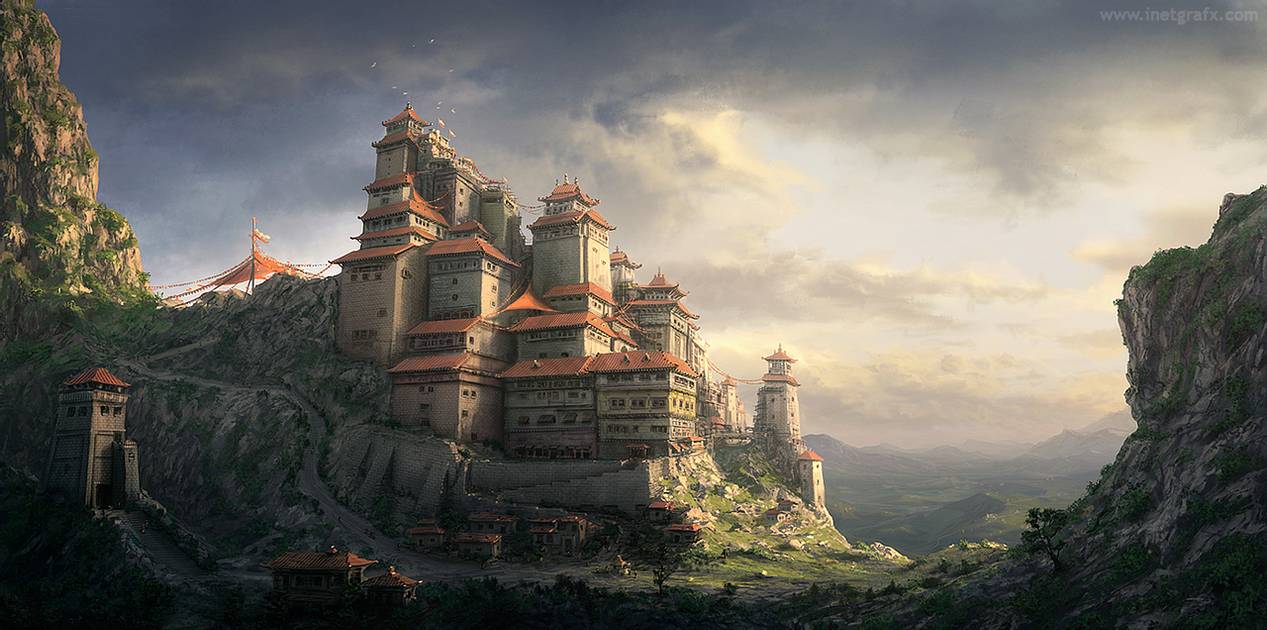




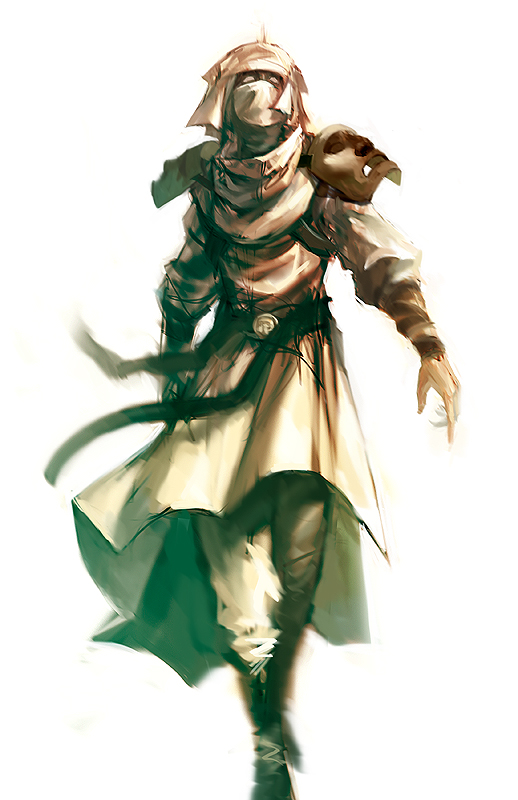
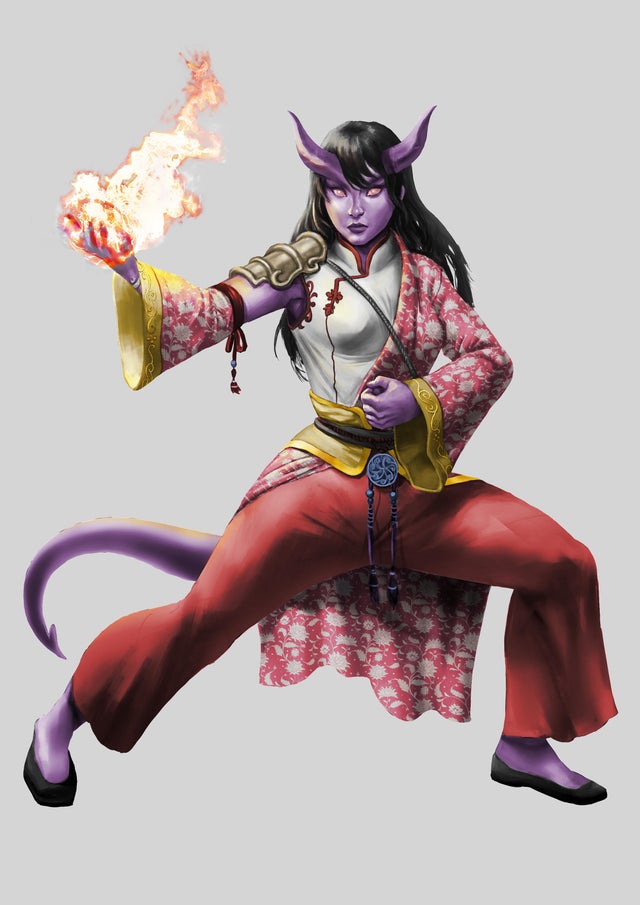
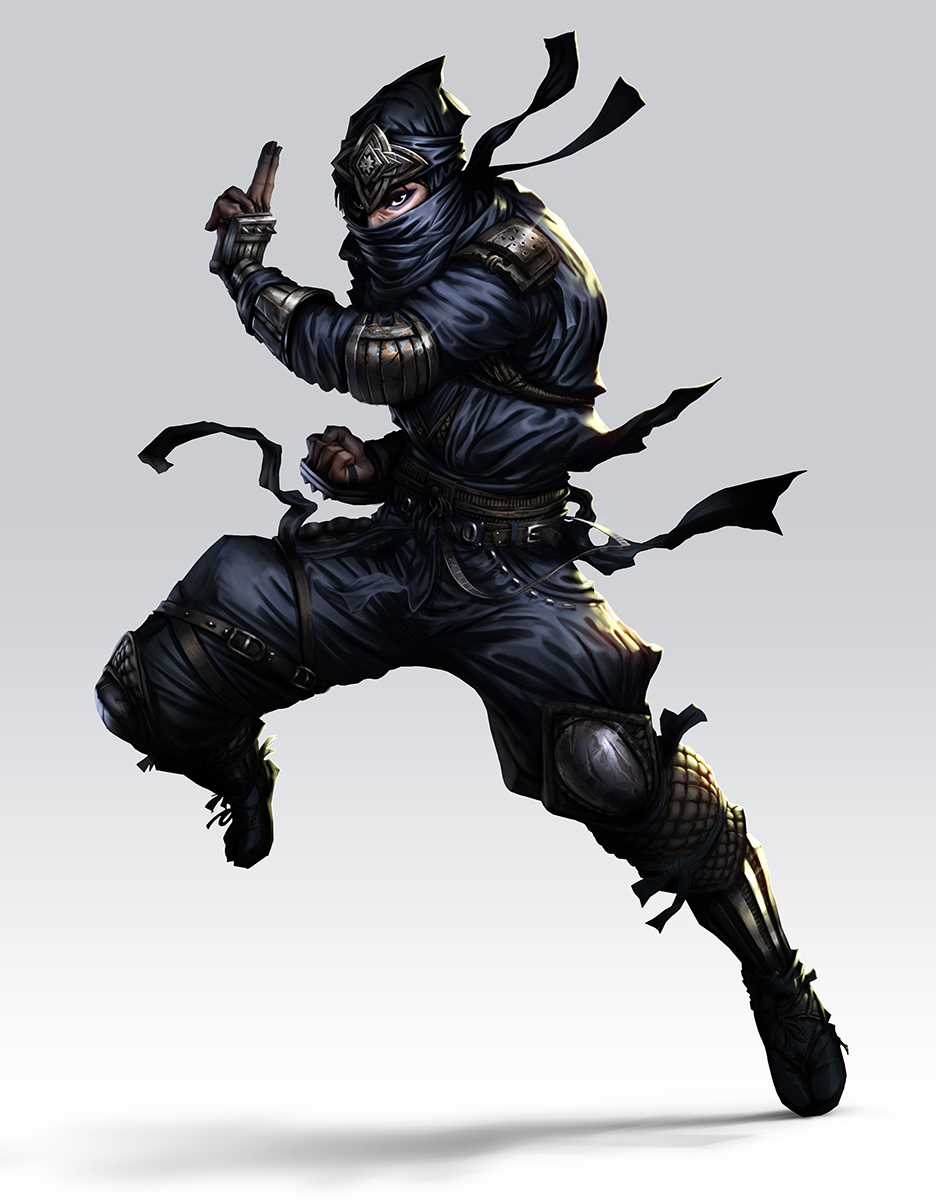


Comments